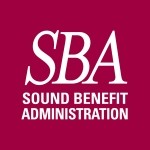Nearly a year ago, Congress enacted a new program hailed to be a savior for small businesses struggling to offer affordable health insurance to their employees. At the time, there were many still unanswered questions and a few eye brow raising concerns. We, in conjunction with our uber smart friends at The Benefits Academy, cautioned employers that this new program was not one-size-fits all and could end up harming the employees they were trying to help.
Today, having served as administrator for several QSEHRA plans over the course of the past year, we provide some real-life scenarios where a QSEHRA has in fact filled a need. And, thanks to The Benefits Academy, we’ll close with updates and clarifications to the program requirements.
Has the QSEHRA provided a viable alternative for small employers?
We checked in with 2 of our QSEHRA clients, and another considering a QSEHRA, to see why they chose to implement a QSEHRA and how employees feel about it today.
Employer #1
Employer #1 opted for a QSEHRA because three employees were enrolled in individual medical insurance plans (not through the WA State Exchange). This employer doesn’t offer a group medical plan because he’s wary of constantly increasing insurance premiums, but wanted to offer employees relief from some or all of their insurance premium costs. Today, he is insulated from rising insurance costs and employees surveyed are very satisfied with the plan.
Result: √ Winner
Employer #2
Employer #2 opted for a QSEHRA in order to reimburse out-of-pocket medical, dental and vision expenses for employees covered as dependents under rich Federal government group medical plans. In this case, a group medical plan wasn’t needed because employees had excellent coverage elsewhere but the employer still wanted to offer benefits with a cap-able limit to reimburse code 213(d) expenses. Employees surveyed are very satisfied with the plan.
Result: √ Winner
Employer #3
Employer #3, with 12 employees, is considering implementing a QSEHRA. Currently, they offer a high deductible Health Savings Account qualified group medical plan. They require employees to meet the first $1,350 of the medical deductible (2018) and the HRA pays 100% of the remaining balance through a bridge HRA plan, thereby retaining participant eligibility for the HSA bank account.
Switching to a QSEHRA has become a hot topic of discussion as this employer is facing a 20% medical renewal with no other lesser expensive plan options available. This employer proposes to eliminate the group medical plan and HRA in favor of a QSEHRA that reimburses individually-owned employee insurance policies.
We asked if any employees, under this new scenario, will qualify for the WA State Exchange and a premium subsidy. The implementation of a QSEHRA could put those subsidies in jeopardy. The answer is yes, but, since employer can’t afford the increase in group medical premiums, even if the QSEHRA eliminates employee subsidy eligibility, at least the employer isn’t going to face another 20% increase in medical premium next year.
The subsidy for the spouse and/or covered dependents will not be impacted by the QSEHRA as it only reimburses employee premiums. As this is a future change, we’ll talk to employees after the switch is made.
Result: ? Stay tuned
Still not one-size-fits all
While a QSEHRA has been shown to provide a viable alternative to employers seeking to manage rising health care premiums, these are not uncomplicated programs. Careful consideration must be given to the employee demographic and it is imperative an employer seeking to implement a QSEHRA review the potential loss of subsidy opportunities for employees.
Over the past year, we have received more clarification on some of the original unknowns and the question of which employers are best suited for QSEHRAs has become more clear. The Benefits Academy has provided us a fantastic Q&A on the current state of the QSEHRA. If you have a client interested in implementing this program, we encourage to contact us, we’d be happy to conduct a review and make a recommendation.
